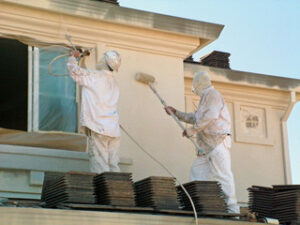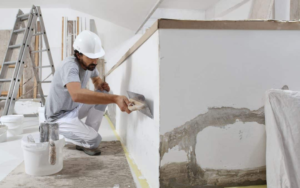Elevate your collection with Phantom’s high-quality, crystal clear acrylic display cases. Each case preserves and amplifies your collectible, bringing it to life as a visual masterpiece.

Featuring unmatched clarity and durability, our Ultra display case is the ultimate choice for serious collectors. The seamless magnetic closure keeps your cards secure without ugly screws, while maintaining a sleek look. Keep reading the article below to learn more about Phantom Display.
The F-4 Phantom is a legendary military aircraft that has inspired the admiration and respect of those who have seen her in action. A storied and powerful machine, the Phantom has served our country with honor and distinction for decades. This special edition of “History in Objects” celebrates the legacy of the F-4 Phantom with images from our collection and stories about how this extraordinary plane has touched the lives of those who have had the pleasure to serve with her.
A popular series of collectibles based on the iconic movie franchise Star Wars, including action figures, costumes, posters, and more, have been produced by Lucasfilm over the years. The company has also created a line of unique and whimsical products that capture the spirit of Star Wars, including one of its most iconic characters, Jar Jar Binks. The unique candy dispenser resembled the mouth of the character, and was activated by pressing a plastic “plunger” behind the head, releasing a cherry-flavored tongue within (Image via Getty Images).
In addition to the original newspaper strip, many other companies have published Phantom comics over the years. Lee Falk wrote the strip until his death in 1999, and King Features Syndicate has since been working with European publisher Egmont to bring Phantom stories to readers worldwide. The Phantom also has a long publishing history in India, with Indrajal Comics starting publication in 1964 and printing the strips in multiple languages until 1990. After that, Diamond Comics and Rani Comics started publishing reprints of the daily and Sunday strips. Today, only Egmont Imagination India prints the Scandinavian work.
When it comes to preserving and protecting valuable collectibles, a good display case is essential. At Phantom Display, we have a variety of crystal-clear acrylic cases designed to fit a variety of items. Each case protects against sun fading and blemishes, while still providing a clear view of the item inside.
Our most popular option, the Prism, is a beautiful display case that combines premium protection with visual elegance. Its fractal edge design reflects light and adds dimension to the piece, creating a dramatic effect that’s sure to impress.
Model Rockets
Phantom Display is proud to offer model rockets that are designed for classroom experiments, demonstrations, and displays. These simple and genuine model rockets are perfect for introducing students to the inner workings of a typical rocket engine. They are also great for teaching a new rocketeer how to properly pack and insert wadding and a parachute, as well as how to launch a model rocket.
These models are built with precision manufactured parts, making them sturdy and easy to assemble. They are also equipped with centering rings that have slots to mate with fins, eliminating the need for friction or tape retention. The fins are additionally tabbed into the rings, ensuring precise alignment. All parts are clearly labeled and full-color illustrated, with a comprehensive set of instructions to guide builders through the process.
This imposing mid-power kit calls back to the glory days with its large ogive nose cone and sharply tapered trapezoidal fins. A rerelease, this model boasts a number of modern conveniences for a hassle-free build and flight. The lightweight tubes are precision manufactured to ensure a light airframe and an impressive arrow-straight flight. The fins are pre-slotted and a motor retainer is included to keep the motor in place. The motor mount consists of three centering rings with slots that mate with the fins, ensuring an excellent fit and simplifying assembly. The kit includes both 1/4″ lugs and rail buttons for those who wish to use their model on modern pads.
Ideal for displays and demonstrations, this rocket is suitable for rocketeers of any age and skill level. The clear plastic parts allow students to observe the inner workings of a typical rocket. It is recommended for ages 10 and up (with adult supervision for those under 12).
In partnership with Ursa Major, Phantom has developed the first two-stage rocket designed to deliver commercial satellites into orbit. The Daytona vehicle transports satellites of up to 450 kg in mass to Earth’s orbit, enabling the most efficient and cost-effective access to space with the shortest time to orbit on record. Daytona’s current configuration uses nine Ursa Major Hadley engines on the first stage and a single Hadley on the upper stage, resulting in an unparalleled combination of performance, affordability, and rapid time-to-market.
Acrylic Display Cases
Phantom Display offers a line of ultra-premium acrylic display cases that elevate and protect collectibles. These cases feature UV resistance, sleek design, and unmatched durability—perfect for serious collectors. These case designs help collectors reimagine their collectibles as artwork, not just objects of value.
Unlike glass, acrylic is lightweight and more flexible. This helps with shipping and logistics costs, which can be prohibitive for larger displays. It also allows for a clearer view of products, and can be used to create an elegant, upscale look for any brand.
As the industry leader in custom acrylic design, Phantom Display’s team of experts has decades of experience designing and manufacturing acrylic displays. Their expert-level craftsmanship and focus on customer feedback have earned them an outstanding reputation for quality, clarity, and protection. This customer-first approach has helped them grow their business to become the trusted partner of collectors around the world.
From small acrylic risers to large cabinets, the team at Phantom Display can create any type of custom display solution. They offer a full range of custom sizes and shapes, as well as a variety of finishes and lighting elements to add a premium feel to any space. These displays are perfect for retail stores, trade shows, conventions, and online retailers.
Many of the cases that Phantom Display creates are designed to fit PSA slabs, allowing collectors to reimagine their collectibles as art. The Prism display is a new option, inspired by the visual elegance of light fractals. This faceted case combines premium protection with geometric beauty, making it the perfect showcase for high-end collectibles.
Another popular option is the Nano display, a compact alternative that still provides superior clarity and transparency. The Nano’s sleek, screw-less magnetic closure ensures the case stays secure without sacrificing accessibility. The Nano’s 93.64% UV resistance protects collectibles from harmful fading, keeping them looking their best for years to come.
Whether you’re a retail brand looking to boost sales, or a cannabis or wireless communication company trying to prevent theft, Phantom’s acrylic displays can help you tell your story and boost engagement with customers. For example, a cannabis sampling table can help you bridge the gap between customer engagement and theft by giving consumers the opportunity to touch and sample products while maintaining store security and brand integrity.
About Phantom Display
When it comes to the world of collectibles, each item tells a story of passion and rarity. Phantom Display curates these narratives by transforming rare items into visual masterpieces with their precision-engineered, crystal-clear acrylic display cases. With a dedication to quality and customer service, it is no surprise that the company has received glowing praise from collectors across the globe for their products.
The first Phantom comic strip was published in 1938, and was originally drawn by Raymond Falk. After the war, he left the strip to his assistant Wilson McCoy who continued the storyline until 1949.
Since then, the character has gone through a number of changes and reinventions. The most notable change came with the retirement of Olesen and Fredericks in 2000, who were replaced by new artists Graham Nolan and Paul Ryan respectively. Both have made a huge impact on the strip, giving it a more filmatic look.
The Phantom has also been parodied in a variety of ways, most notably by the Australian actor Paul Hogan who used to dress up in the costume for his comedy show. The character has also appeared on Scandinavian television in various humor programs. In addition, the F-4 Phantom ranks among the most important military aircraft of all time, serving in combat zones from Vietnam to Iraq and inspiring awe in all who saw it in action.








